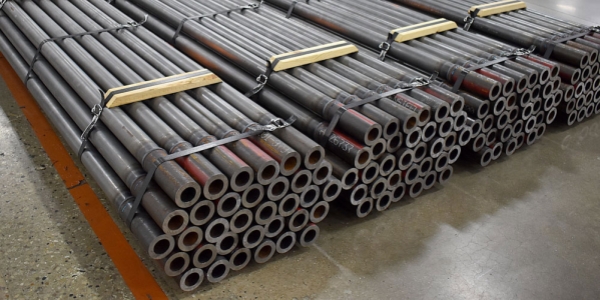Drill pipe is a tool used in oil and gas drilling that connects the drill bit to the drilling tools, allowing them to penetrate into the ground. Drill pipe can be divided into many types and classifications according to different standards and needs. The following are some common drill pipe classifications and types.

Drill Pipe Classification:
- N class pipe, or new pipe.
The strongest, newest pipe available. Usually in pristine (or close to it) condition.
- P class pipe, or premium pipe.
A step-down from N-class pipe, premium pipe have endured some wear, but can still function very capably.
- C class pipe
C-class pipe, of which there are three classes (C-1, C-2, and C-3). Depending on their rating, C-class pipes are either well-worn pipes, or nearing the end of their useful lives.
Drill Pipe Types:
- Classified by material:
Steel Drill Pipe: This is the most common type of drill pipe and is usually made of carbon or alloy steel. They are suitable for a variety of drilling conditions, including conventional and high-pressure and high-temperature environments.
Non-steel drill pipe: Sometimes, drill pipe may be made from non-metallic materials, such as composites or aluminum alloys, to meet special needs, such as weight reduction.
- Classified by connection method:
API connection: Drill pipe manufactured according to American Petroleum Institute (API) standards usually uses API threaded connections.
Special Connections: Certain projects and special applications may require non-standard drill pipe connections to accommodate special needs.
- Classified by outer diameter and wall thickness:
The outer diameter and wall thickness of drill pipe can be varied based on project needs, resulting in a variety of drill pipe specifications and sizes.
- Classified by use:
Standard Drill Pipe: Typically used in general drilling operations.
Heavy Duty Drill Pipe: Used for deep water drilling or drilling in particularly harsh conditions.
Square drill pipe: used for drilling operations in square holes, such as mining projects.
Subsea drill pipe: specially designed for deep sea drilling and can withstand high pressure and high temperature environments.
- Classified according to the structure of drill pipe:
Standard Drill Pipe: Typically constructed of tubular steel pipe with consistent outside diameter and wall thickness.
Eccentric drill pipe: These drill pipes have larger outer diameters in certain sections to increase rigidity and reduce bending and deflection.
Multi-layer drill pipes: They are composed of multiple layers of different materials for both rigidity and strength.
- Classified by special needs:
High temperature and high pressure drill pipe: suitable for high temperature and high pressure underground environments, such as deep sea and oil fields.
Directional drill pipe: used in horizontal drilling and directional drilling operations to control the direction of the drill bit.
The appropriate drill pipe type needs to be selected based on the specific project and needs. Different geological conditions, well depths and engineering requirements may require different types of drill pipe to ensure safe and efficient drilling operations.

 English
English Español
Español




 Tel : +86-18565811709
Tel : +86-18565811709 Email :
Email : 

 News
News




